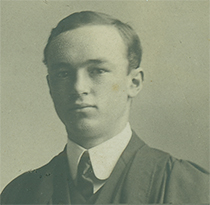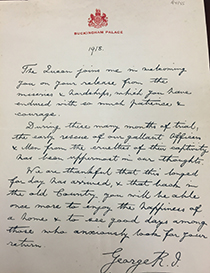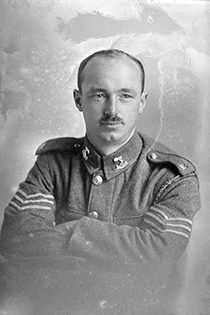
Arthur Gray before leaving New Zealand.Sir George Grey Special Collections, Auckland Libraries, 31-G513.
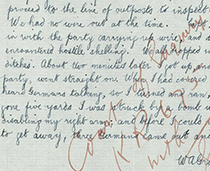
Gray’s letter describing his capture.Gray, William Arthur - WWI 25/955, WWII N/N – Army, R24098158, Archives New Zealand.
Gray's war
The 26-year-old was working as a civil engineering assistant for the Railways Department when he enlisted for military service in May 1915. He was attached to A Company, 3rd Battalion, 3rd New Zealand Rifle Brigade (NZRB) as a second Lieutenant and left the country in early February 1916.
The NZRB reached France in April 1916 and in late May went into action in the trenches in the French Armentières sector. A month later, Gray was shot in the thigh and was shipped back to England for medical treatment.
Gray returned to France in early September in time for the New Zealand Division’s entry into the first Battle of the Somme during the third push of the Allied offensive. In fighting near Flers village in mid-September, Gray took command of A Company after deaths and injuries left him as its only officer. He was awarded the Military Cross in late October for `conspicuous gallantry in action’.
The 3rd Battalion took part in the assault on the German-held Belgian town of Messines in June 1917 and were still fighting in the area in early August. On 6 August, the Battalion was holding part of the line north of the River Lys, between Messines and Warneton. At 8pm, Gray and fellow Collegian Captain Alexander Thomson went out to inspect a wiring party. They reached the group but came under artillery fire. In a 1918 letter to New Zealand’s military commander, Gray described what happened next:
`We all dropped into shell-holes or ditches. About two minutes later I got up, and, seeing none of the party, went straight on. When I had covered about 100 yards, I heard Germans talking, so I turned and ran, but before I had gone five yards, I was struck by a bomb which knocked me o[ver], disabling my right arm; and before I could make any attempt to get away, three Germans came and carried me off.’
Gray had surgery on his arm in the Belgian town of Menin, after which he was transported to St Vincenz Krankenhaus [hospital] in Paderborn, north-west Germany. He underwent a second operation nine months later. According to one of Gray’s three military records, he was detained in hospital at Paderborn for nearly 12 months but another record suggests he was also in a POW camp in nearby Sennelager for a time. Promoted to Captain during his captivity, in September 1918 Gray was transported 400km south to the officer’s POW camp in Karlsruhe. It was from there that Gray sent this photograph to a `Miss N Pethybridge’ in Devon, England, with the brief message, `All well’.
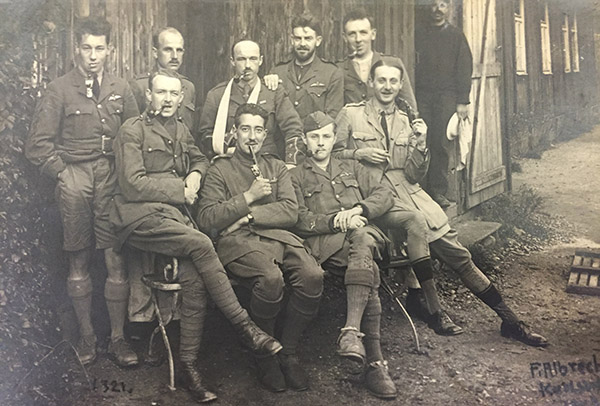 Arthur Gray, with arm in a sling, at Karlsruhe POW camp. William Arthur Gray. Auckland War Memorial Museum Tamaki Paenga Hira. MS-94-55.
Arthur Gray, with arm in a sling, at Karlsruhe POW camp. William Arthur Gray. Auckland War Memorial Museum Tamaki Paenga Hira. MS-94-55.



